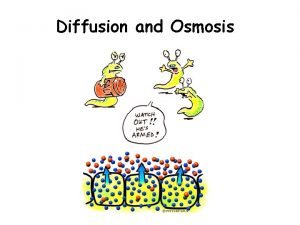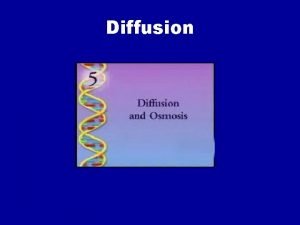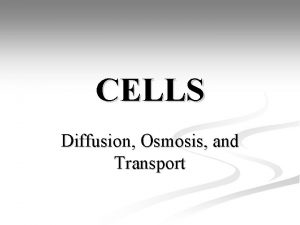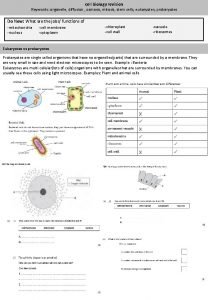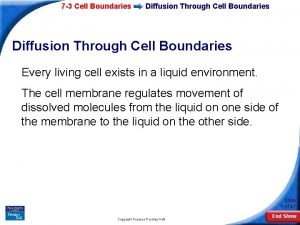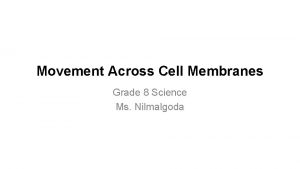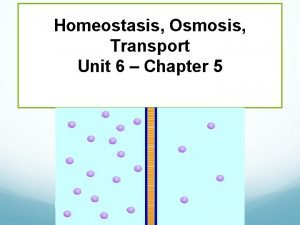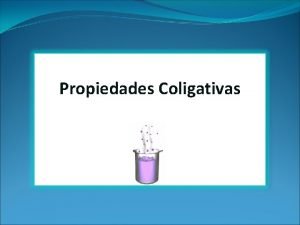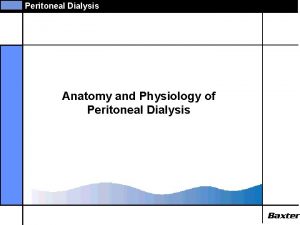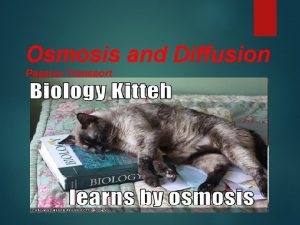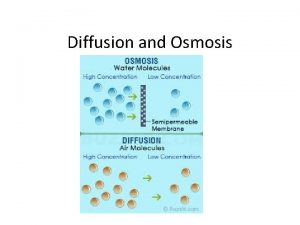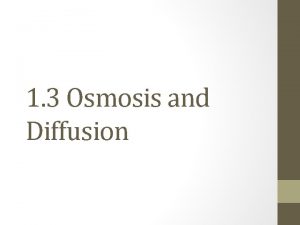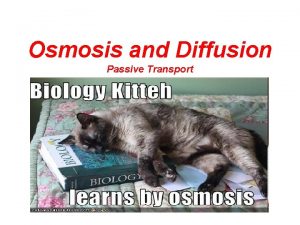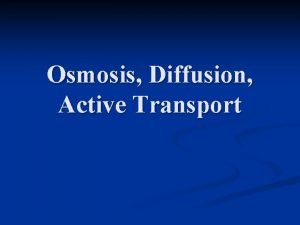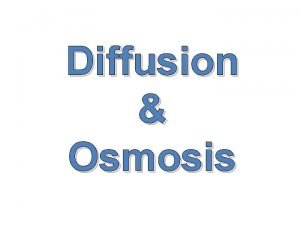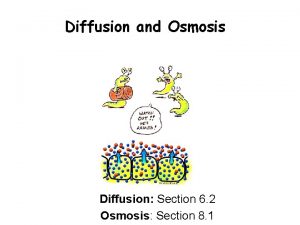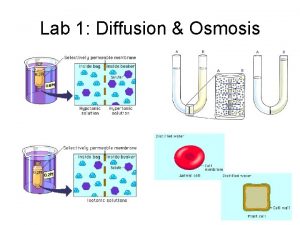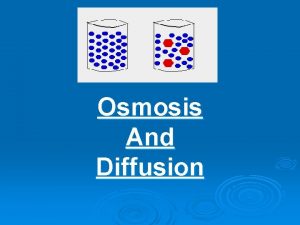Cell transportation Diffusion and osmosis Cell transportation The














- Slides: 14

Cell transportation: Diffusion and osmosis

Cell transportation The cell membrane… • Allows molecules to enter/exit • Is selectively permeable – only certain molecules can pass through What is an example of something in the real world that is selectively permeable? Take a minute and write down an example in your journal.

Cell transportation A screen door Allows in: - Air, dust, smells, temperature Keeps out: - Bees, flies, angry cats, marauding raccoons, vicious badgers, an annoying neighbor

Cell transportation Discussion questions: 1. Why does a cell need to control what enters or exits? 2. What are some examples of molecules that the cell membrane might want to let in or keep out?

Diffusion • A process that allows small molecules to move through the cell membrane • Molecules move from high concentration to low concentration High concentration = lots Low concentration = few

Diffusion Outside the cell Oxygen molecules Inside the cell Molecules move from an area of high concentration to low concentration.

Diffusion Let’s see a simple example of diffusion using a can of air freshener. Without talking, raise your hand when you can smell the scent.

Diffusion • A process that allows small molecules to move through the cell membrane from high concentration to low concentration • In your journal: What evidence from the air freshener activity demonstrated diffusion? Describe in writing or sketch.

Osmosis • The diffusion of water through the cell membrane • Water moves from an area of high concentration and spreads out into areas of low concentration

Osmosis Let’s see a simple example of osmosis using sponges and water. The sponge will serve as our ‘cell’

Osmosis • The diffusion of water through the cell membrane from high to low concentration • In your journal: What evidence from this activity demonstrated osmosis?

Diffusion & osmosis • Diffusion and osmosis are types of passive transport – Does not require a cell to use any energy – happens automatically

Diffusion Classroom = outside of the cell (extracellular) Hallway = inside the cell (intracellular) Students = oxygen molecules that need to get inside the cell Stand up and let’s act out the process of oxygen molecules diffusing into the cell from high to low concentration!

Osmosis Classroom = outside of the cell (extracellular) Hallway = inside the cell (intracellular) Students = water molecules that need to get inside the cell Stand up and let’s act out the process of water moving from high to low concentration into a thirsty cell via osmosis!
 Receptor - mediated endocytosis
Receptor - mediated endocytosis Facilitated diffusion vs osmosis
Facilitated diffusion vs osmosis Facilitated diffusion vs osmosis
Facilitated diffusion vs osmosis Diffusion osmosis
Diffusion osmosis Does osmosis require energy
Does osmosis require energy Stimulus diffusion diagram
Stimulus diffusion diagram Diffusion through cell boundaries worksheet answers
Diffusion through cell boundaries worksheet answers Diffusion in cell membrane
Diffusion in cell membrane Osmosis water and salt
Osmosis water and salt Calculating water potential
Calculating water potential Important
Important Transporte pasivo y activo
Transporte pasivo y activo Osmosis tattoo
Osmosis tattoo Propiedades constitutivas y coligativas
Propiedades constitutivas y coligativas Peritoneal equilibration test
Peritoneal equilibration test
